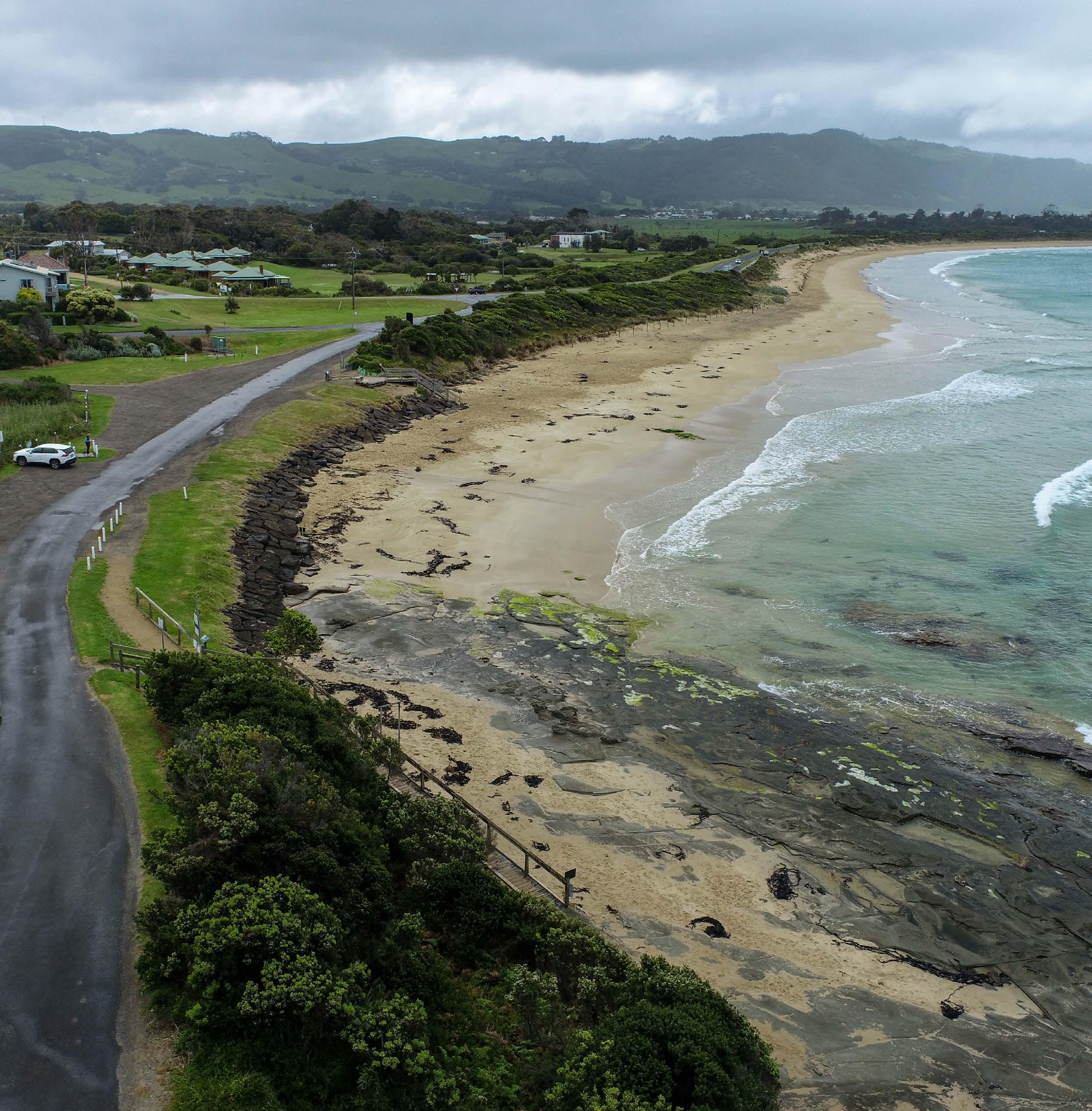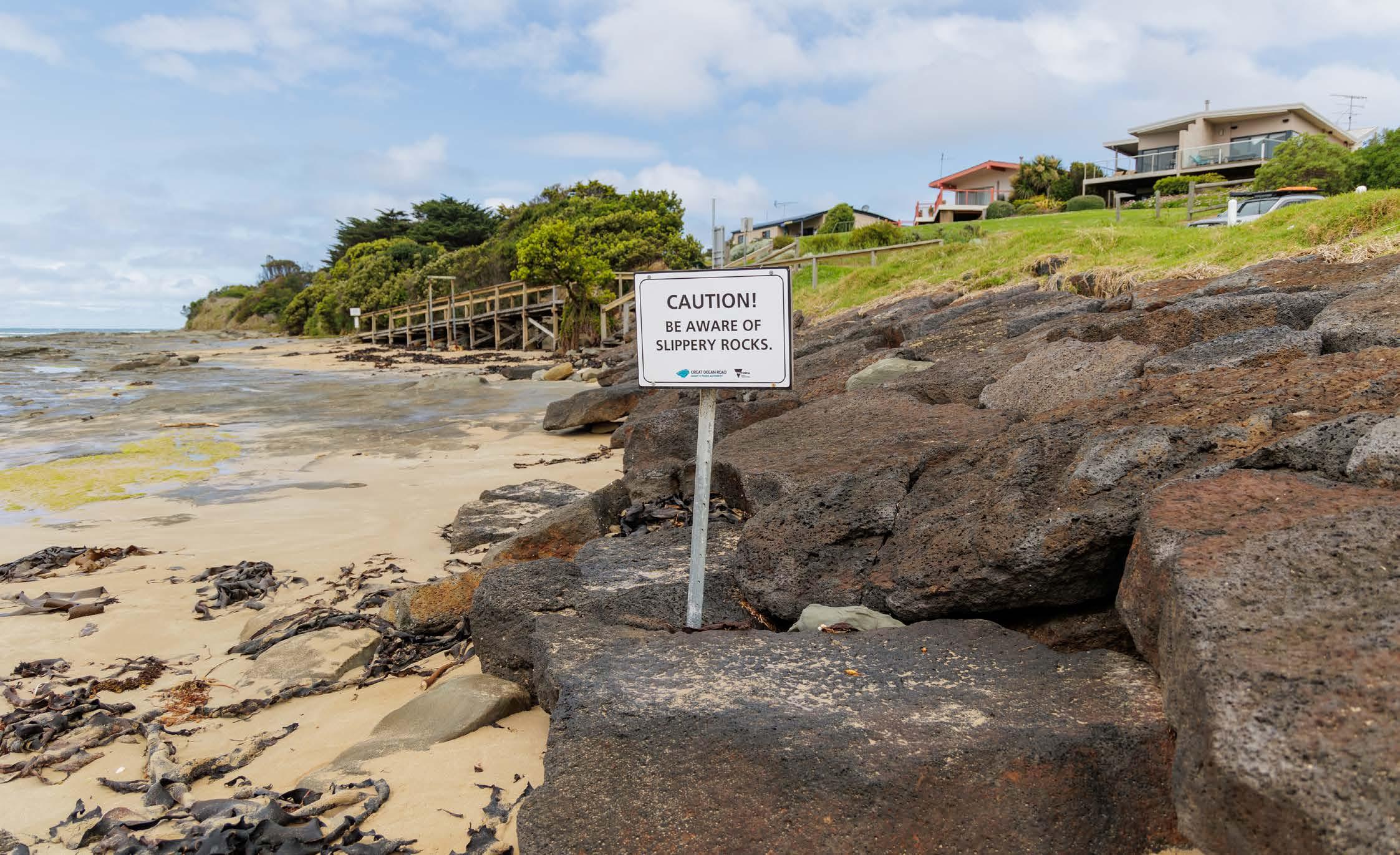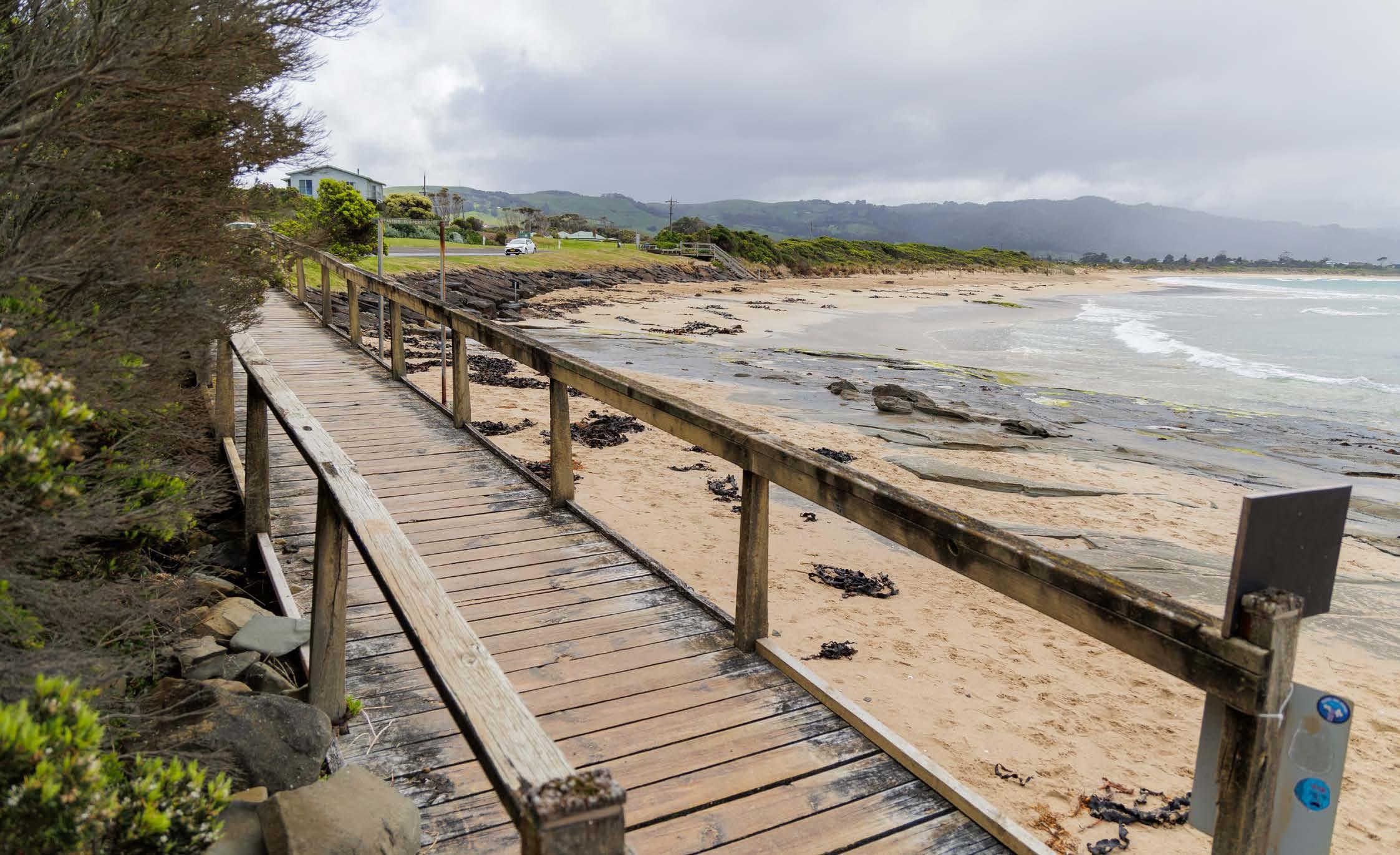MARENGO RAMP REPLACEMENT
WHAT WE HEARD - ENGAGEMENT SUMMARY REPORT





We acknowledge and respect the separate and distinct Eastern Maar and Wadawurrung Peoples as the Traditional Owners of the Great Ocean Road’s land, waters, seas and skies and recognise their cultural knowledge that has led to sustainable practices and has cared for Country over tens of thousands of years.
We honour Elders past and present and express gratitude for their sharing of wisdom that has ensured the continuation of culture and traditional practices.
We are committed to genuinely partner and build meaningful relationships that reflect selfdetermination and enable us to work together with our Traditional Owners and Aboriginal communities to support the protection of Country, the maintenance of spiritual and cultural practices, and together deliver on their broader aspirations in the 21st century and beyond.

As this project is located on Eastern Maar Country, we will engage closely with the Eastern Maar Aboriginal Corporation (EMAC) to ensure cultural heritage is respected and Traditional Owner perspectives are integrated throughout the project.
By involving the community and Traditional Owners in the design process, we aim to create a sustainable, safe, and accessible solution that supports continued enjoyment and care for this treasured coastal area.
The Great Ocean Road Coast and Parks Authority (the Authority) is immensely privileged to be tasked with protecting and enhancing the Great Ocean Road’s coast and parks on behalf of the community.
Our commitment is to listen, engage, respect, and echo the views of our community and stakeholders in all we undertake, following our Community Engagement Strategy.
The Marengo access ramp is located at the southern end of Mounts Bay near Apollo Bay. The ramp acts as a gateway to the rock shelf, rock pools and headland as well as providing an informal route for the renowned Great Ocean Walk.
The Mounts Bay coastline is dynamic, shaped by natural processes such as erosion and storm activity. These changes highlight the importance of infrastructure that is resilient to coastal hazards while supporting safe access to the foreshore.
We take a long-term, adaptive approach to managing these hazards, guided by the Victorian Resilient Coast Adapting for 2100+ Guidelines and informed by regional planning, such as the Regional Coastal Adaptation Plan
The existing Marengo ramp has served the community for many years, providing reliable access to the coastline. The ramp is an important asset for connecting people with the coast. Its replacement ensures that this access continues while addressing safety, environment and user needs.
The ramp replacement is driven by several factors:
•Safety and accessibility: The current structure is coming to the end of its functional life. Frequent maintenance is required, and the accompanying stairs have been identified as a safety risk, depositing users onto a hazardous section of the rock shelf.
•Coastal Erosion: The current ramp is sited on the rock platform and a replacement ramp at this located could be designed to accommodate for erosion.
•Evolving Community Needs: The new design will reflect community values and incorporate feedback to enhance usability and safety features.
This project is part of a broader commitment to sustainable coastal management.

Community and stakeholder engagement is central to the Marengo ramp replacement project. By consulting with local community members, visitors and stakeholders, we aim to share knowledge and insight into the coastal hazards affecting the area, understand the values and usage of the ramp and surrounding area, and incorporate feedback on design preferences, including safety features and aesthetics, into the final design. The outcomes of this engagement will guide ramp design and ensure the new ramp meets the needs of the community while addressing safety and environmental considerations.
We gathered community feedback in November and December 2024 through an online survey and two in-person drop-in sessions at the Apollo Bay Community Market and the Marengo foreshore.
The engagement was promoted through social media, flyers and emails to key community and stakeholder groups.
Throughout the engagement, we asked how you use and value the Marengo beach access ramp and foreshore area, what you’d like to see in the ramp design—such as aesthetics and safety features—and any concerns or suggestions you had for the new ramp.
online surveys submitted visits to the project page
talked to us at drop-in sessions
59% of respondents had some concerns about the accessibility of the current ramp. The main issues raised included:
• Sections of the rock shelf contain slippery and dangerous rocks
• The ramp provides poor functionality for carrying large equipment like kayaks
• The ramp provides limited access to the sand and beach, especially at high tide.

Safety and accessibility are key concerns with many respondents noting that the current ramp leads to an area with slippery rocks. This can create a hazard, particularly for those with mobility challenges. We also heard that prams, wheelchairs and kayaks are difficult to manoeuvre due to the ramp’s current safety features and surface.
We are aware of the hazards associated with the slippery rocks that exist on the rock shelf that adjoins the beach. We have installed hazard signage that aligns with Australian standards as we know that regardless of the ramp location people will still have a desire to walk along the rocks. We want to make users aware of the risk of entering the rock shelf area, both from the beach and the access ramp.
We are installing a non-slip fibre-reinforced surface on the ramp deck to reduce the risk of slipping and better accommodate users and provide a safe access point to the rock shelf and headland. Relocation of the ramp to other locations is not feasible as the ramp would be exposed to storm damage.

Respondents have expressed strong preferences for the ramp to be made from non-slip materials and colours that blend into the environment, with light grey being the most preferred option. Additional safety features such as grab rails and vertical balustrades were supported by many respondents, particularly for helping young children and those needing additional stability.
However, there were mixed views on the inclusion of an access gate, with some respondents seeing it as a safety measure and others concerned about restricting access.
We have decided against the installation of an access gate at this location to balance safety needs with ease of access.
Taking this feedback into account, we are prioritising a non-slip surface across the entire ramp and including grab rails, as well as vertical balustrades.

While some respondents expressed concerns about the removal of the stairs due to removing direct access to the rock shelf, this is the area that has very slippery natural algal growth that has resulted in several public safety incidents. Warning signs have been installed and due to the public safety risk, the stairs will be removed. As the ramp leads to a dry area on the rock shelf that is less slippery it will be replaced in its current location.

Many respondents supported improved hazard signage to warn of slippery rocks, but some felt there is already an overload of signs in the area, with concerns for ‘visual pollution’ distracting from the natural setting.
We will ensure that any additional hazard signage is clear, concise and strategically placed at key entry points rather than scattered across the site. We will install signs that adhere to Australian standards for hazard signage that effectively communicate the risks while respecting the coastal landscape.
We received suggestions to change the ramp direction so it leads to the sand as this would provide easier access to the beach.
We understand the desire for a more direct beach access point and appreciate the feedback highlighting the importance of accessibility.
However, the area between the current ramp and the beach is a scour zone, meaning it is highly vulnerable to erosion and coastal hazards such as storm damage. A ramp leading to the sand would be underwater at high tide, exposed to hazards, and subject to rapid deterioration, making it unsustainable as a long-term solution.
It is common practice for ramp's onto the beach to be aligned parallel with the foreshore to reduce the amount that the structure protrudes into the coastal environment, lessening the impacts from coastal erosion.
The current ramp position has been chosen as it allows for pedestrian traffic to walk along the foreshore towards the headland during mid to high tide. As there is a structure already in this location it will also help to minimise potential environmental and cultural heritage impacts.
Ensuring that the new ramp is safe, durable and sustainable is our priority.
Your valuable input has helped us better understand how the Marengo access ramp is used and valued by the community and visitors. The engagement results provided important insights into the key priorities for safety, accessibility, and design, ensuring the new ramp meets the needs of a wide range of users while being sustainable and resilient to changing coastal conditions.
The feedback gathered will guide the development of the ramp concept designs, which will be shared with the community before construction begins. Our commitment to evidence-based decision-making means that we carefully consider community feedback alongside environmental factors, coastal hazards, cultural heritage values, safety and long-term sustainability to deliver the best outcome for this important access point.
Thank you for taking the time to share your thoughts on the Marengo ramp replacement. Your input is helping us create a safer, more accessible, and resilient structure for the community to enjoy now and into the future. The next step in this project will be to finalise the concept designs for release, with construction planned for completion ahead of the 2025 peak season.
You can keep up-to-date with this project by visiting the HaveYour Say Webpage.

If you have further questions about the project, please visit the Have Your Say webpage.
The project team can be contacted at: haveyoursay@GreatOceanRoadAuthority.vic.gov.au.